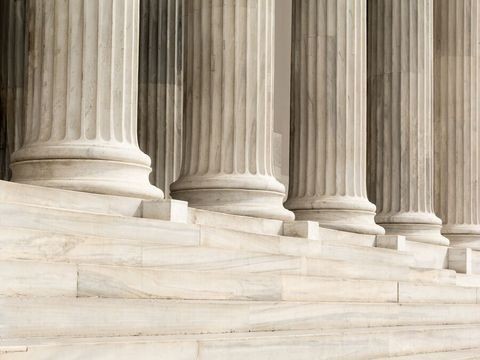IRS Delays Implementation of Unpopular Roth Catch-up Requirements under SECURE 2.0
What You Need to Know
Key takeaway #1
For 2024 and 2025, 401(k), 403(b) and governmental 457(b) plans will be deemed to comply with section 603 of the SECURE 2.0 Act’s requirements that higher wage earners make only Roth catch-up contributions, even if those individuals make pre-tax catch-up contributions during those years.
Client Alert | 3 min read | 08.28.23
The IRS has delayed the implementation of § 603 of the SECURE 2.0 Act (“Act”), which requires certain highly paid plan participants to make Roth (rather than pre-tax) catch-up contributions beginning in 2024. In short, the IRS has provided an “administrative transition period” during 2024 and 2025 whereby individuals who made more than $145,000 in FICA wages during the prior year can continue to make pre-tax catch-up contributions. This is great news for employers and those taxpayers who would have been forced into Roth catch-up contributions.
Background: At the end of 2022, Congress passed the Act as part of a larger end of year spending bill. See here for a summary of the Act. Among numerous other changes, the Act provided that, effective for plan years starting after 2023, catch-up contributions must be treated as Roth contributions for employees whose prior year wages (as determined under § 3121(a)) exceeded $145,000. For employees making more than that amount, pre-tax deferrals will be capped at the regular 401(k) limit. Presumably, the tax revenue generated by eliminating the pre-tax feature for the higher paid workers was intended to help offset the costs of the other aspects of the legislation.
On Friday August 26, 2023, the IRS released Notice 2023-62 which provides an “administrative transition period” until 2026 during which a participant who is otherwise eligible to make catch-up contributions will be treated as satisfying the requirements under the Code even if those contributions are made on a pre-tax basis by someone with prior year wages over $145,000. In other words, compliance with the new Roth catch-up restrictions under for higher-paid employees is delayed until 2026.
Open Issues: In the Notice, the IRS also confirmed that additional guidance is forthcoming and will address the following implementation issues. Employers and taxpayers will have the opportunity to provide comments.
- Partners and Self-Employed Workers. As discussed above, the Act’s limitation on pre-tax catch up contributions applies only to individuals with wages under § 3121(a) during the preceding year. Because 3121(a) wages are defined as “renumeration for employment,” the clear language of § 603 of the Act should not apply to self-employed taxpayers (e.g., partners) or to any other individuals who are not engaged in “employment” as defined in in § 3121(b). One would assume that future guidance would merely parrot the clear and unambiguous statutory language on these points.
- Auto-conversion. The IRS indicated that it will consider guidance on the issue of whether an individual who elects to make catch-up contributions will be deemed to elect Roth contributions for such amount to the extent the employee is not eligible to make such contributions on a pre-tax basis.
- Multiple employer issues. The IRS also intends to issue guidance for complying with the new catch-up limitations for individuals that participate in plans maintained by more than one employer, such as multiemployer union plans.
What Sponsors Should Do Today: Reach out to your 401(k), 403(b) or (for governmental employers) 457(b) plan administrator regarding communications surrounding 2024 and catch-up contributions. For sponsors with partners or other non-employed individuals with unique issues under the Act, we recommend submitting a comment letter to the IRS to help direct and clarify future guidance on your particular issue.
Contacts
Insights
Client Alert | 5 min read | 12.12.25
Eleventh Circuit Hears Argument on False Claims Act Qui Tam Constitutionality
On the morning of December 12, 2025, the Eleventh Circuit heard argument in United States ex rel. Zafirov v. Florida Medical Associates, LLC, et al., No. 24-13581 (11th Cir. 2025). This case concerns the constitutionality of the False Claims Act (FCA) qui tam provisions and a groundbreaking September 2024 opinion in which the United States District Court for the Middle District of Florida held that the FCA’s qui tam provisions were unconstitutional under Article II. See United States ex rel. Zafirov v. Fla. Med. Assocs., LLC, 751 F. Supp. 3d 1293 (M.D. Fla. 2024). That decision, penned by District Judge Kathryn Kimball Mizelle, was the first success story for a legal theory that has been gaining steam ever since Justices Thomas, Barrett, and Kavanaugh indicated they would be willing to consider arguments about the constitutionality of the qui tam provisions in U.S. ex rel. Polansky v. Exec. Health Res., 599 U.S. 419 (2023). In her opinion, Judge Mizelle held (1) qui tam relators are officers of the U.S. who must be appointed under the Appointments Clause; and (2) historical practice treating qui tam and similar relators as less than “officers” for constitutional purposes was not enough to save the qui tam provisions from the fundamental Article II infirmity the court identified. That ruling was appealed and, after full briefing, including by the government and a bevy of amici, the litigants stepped up to the plate this morning for oral argument.
Client Alert | 8 min read | 12.11.25
Director Squires Revamps the Workings of the U.S. Patent Office
Client Alert | 8 min read | 12.10.25
Creativity You Can Use: CJEU Clarifies Copyright for Applied Art
Client Alert | 4 min read | 12.10.25
Federal Court Strikes Down Interior Order Suspending Wind Energy Development




